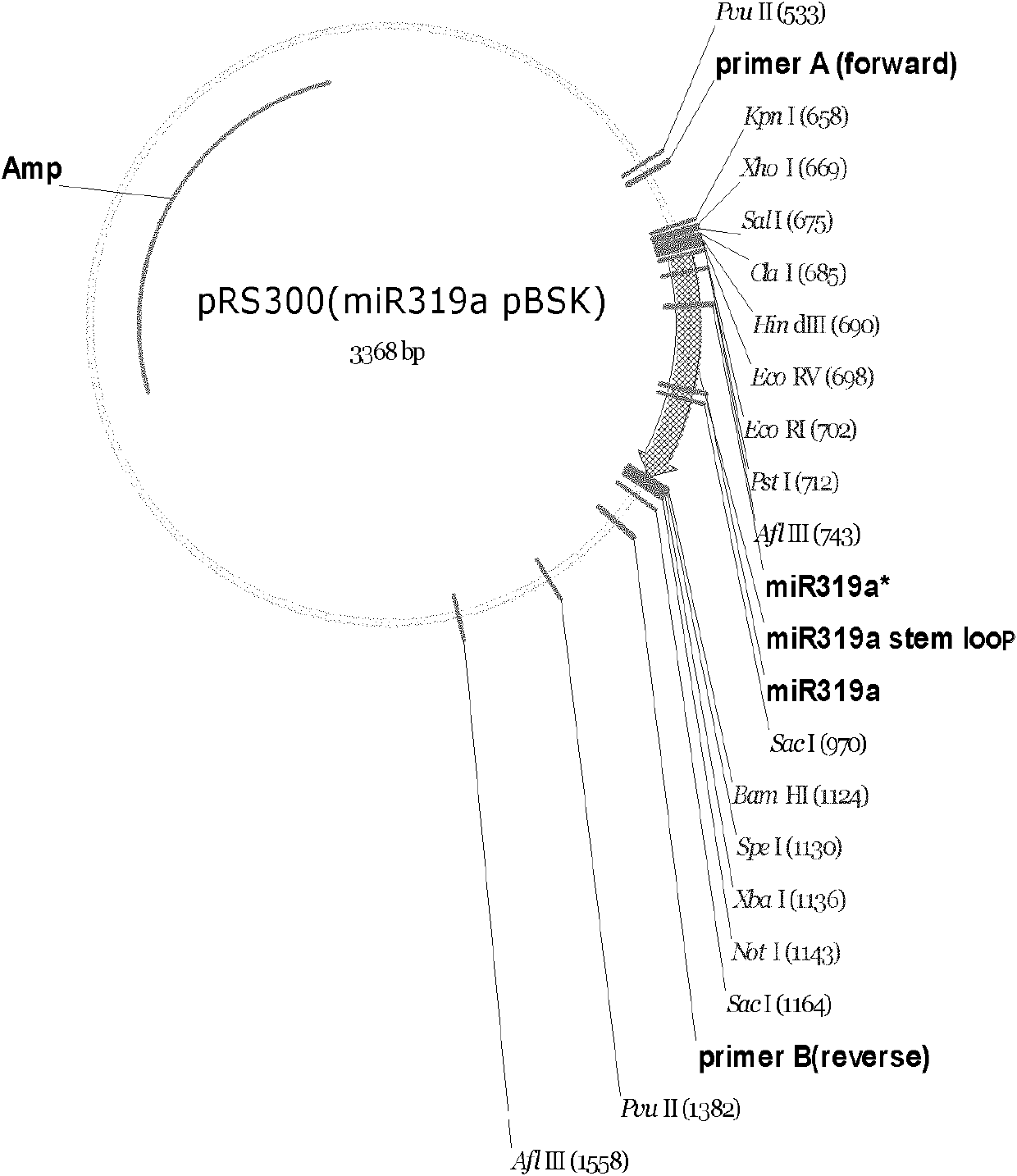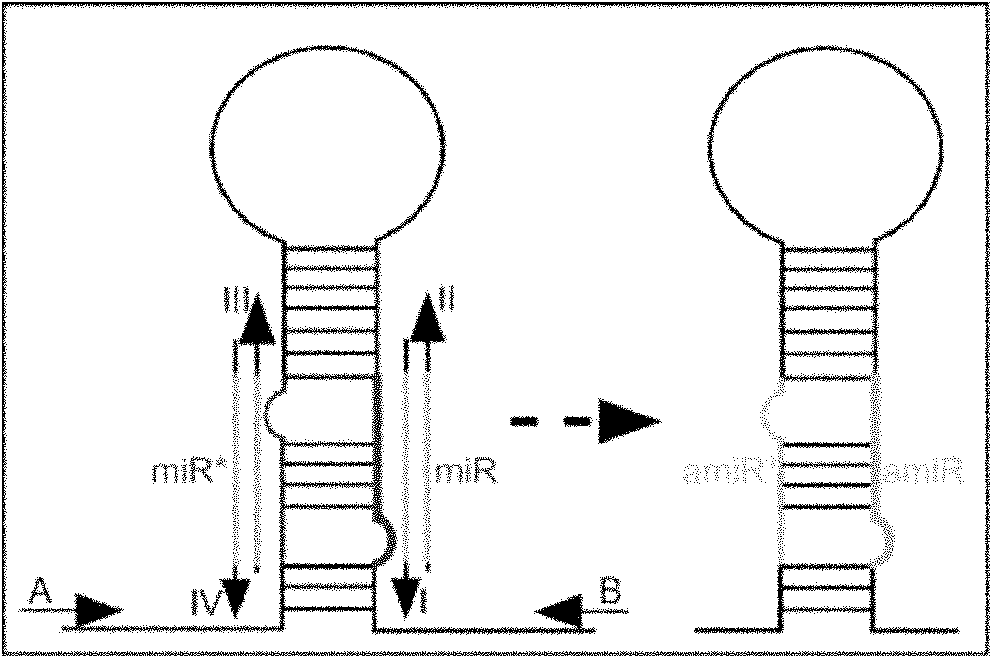Plant virus inhibitory artificial miRNA (microRNA) and construction and application thereof
A technology for plants and constructs, applied in the fields of biotechnology and botany, which can solve problems such as judging genetic laws
- Summary
- Abstract
- Description
- Claims
- Application Information
AI Technical Summary
Problems solved by technology
Method used
Image
Examples
preparation example Construction
[0194] 5. Preparation and transformation of Agrobacterium competent cells by freeze-thaw method
[0195] a) Pick a single colony of GV3101 from a fresh plate cultured at 28°C for 48 hours, transfer it to 20ml LB liquid medium (rif 50mg / l, GM 5050mg / l), and culture overnight at 28°C 250rpm with shaking (not too thick) . (All operations below are carried out under sterile conditions).
[0196] b) After ice bathing for 20 minutes, divide the bacteria solution into 5 ml centrifuge tubes (each tube 4 ml), and ice bath for 10 minutes.
[0197] c) Centrifuge at 4000 rpm (5-10° C.) for 10 minutes, and discard the supernatant.
[0198] d) Add 1ml of fully pre-cooled 20mM CaCl to each tube 2 To resuspend the bacteria. Ice bath for 10 minutes.
[0199] e) Centrifuge at 4000 rpm (5-10° C.) for 10 minutes, and discard the supernatant.
[0200] f) Add 300μl 20mM CaCl to each tube 2 (Depending on the concentration of the bacteria), after merging, divide into 1.5ml centrifuge tubes.
...
Embodiment 1
[0237] Embodiment 1, fine design of antiviral miRNA
[0238] The inventors collected 56 genome sequences of turnip mosaic virus TuMV from different sources, compared and analyzed the full-length sequence of its silencing suppressor HC-Pro, and also collected 11 genome sequences of cucumber mosaic virus CMV from different sources Sequence, comparative analysis of the full-length sequence of its gene silencing suppressor 2b. For the results of sequence comparison, see image 3 and Figure 4 . Through sequence comparison analysis, small fragments with strong conservation were selected from gene silencing suppressor HC-Pro and 2b sequences as possible candidate artificial miRNA target sequences.
[0239] In order to more effectively design artificial miRNA plant expression vectors, based on the full-length sequence of HC-Pro of TuMV (SEQ ID NO: 35) and the full-length sequence of 2b of CMV (SEQ ID NO: 36), the inventors silenced these two genes The secondary structure of the r...
Embodiment 2
[0253] Embodiment 2, artificial miRNA plant expression vector construction
[0254] Reference is made to the method provided in The Plant Cell (2006), Vol. 18, 1121-1133.
[0255] The construction of the artificial miRNA expression vector uses the vector pRS300 (obtained from the Max Planck Institute of Developmental Biology, Germany, the vector comes with pre-miR319a) as a template, and its map is shown in figure 1 .
[0256] Cloning methods such as figure 2 As shown, the main route is to replace the mature small fragment of miR319 present in the pre-miR319a of the vector pRS300 with artificial miRNA in the manner of site-directed mutagenesis to construct a plant gene expression vector for antiviral artificial miRNA:
[0257] 1) Input each sequence in the aforementioned "DNA sequence corresponding to the artificial miRNA nucleotide sequence" into the online design tool WMD-Web MicroRNA Designer (http: / / wmd.weigelworld.org / cgi-bin / mirnatools.pl ?page=4), produce the follow...
PUM
 Login to View More
Login to View More Abstract
Description
Claims
Application Information
 Login to View More
Login to View More - R&D
- Intellectual Property
- Life Sciences
- Materials
- Tech Scout
- Unparalleled Data Quality
- Higher Quality Content
- 60% Fewer Hallucinations
Browse by: Latest US Patents, China's latest patents, Technical Efficacy Thesaurus, Application Domain, Technology Topic, Popular Technical Reports.
© 2025 PatSnap. All rights reserved.Legal|Privacy policy|Modern Slavery Act Transparency Statement|Sitemap|About US| Contact US: help@patsnap.com



